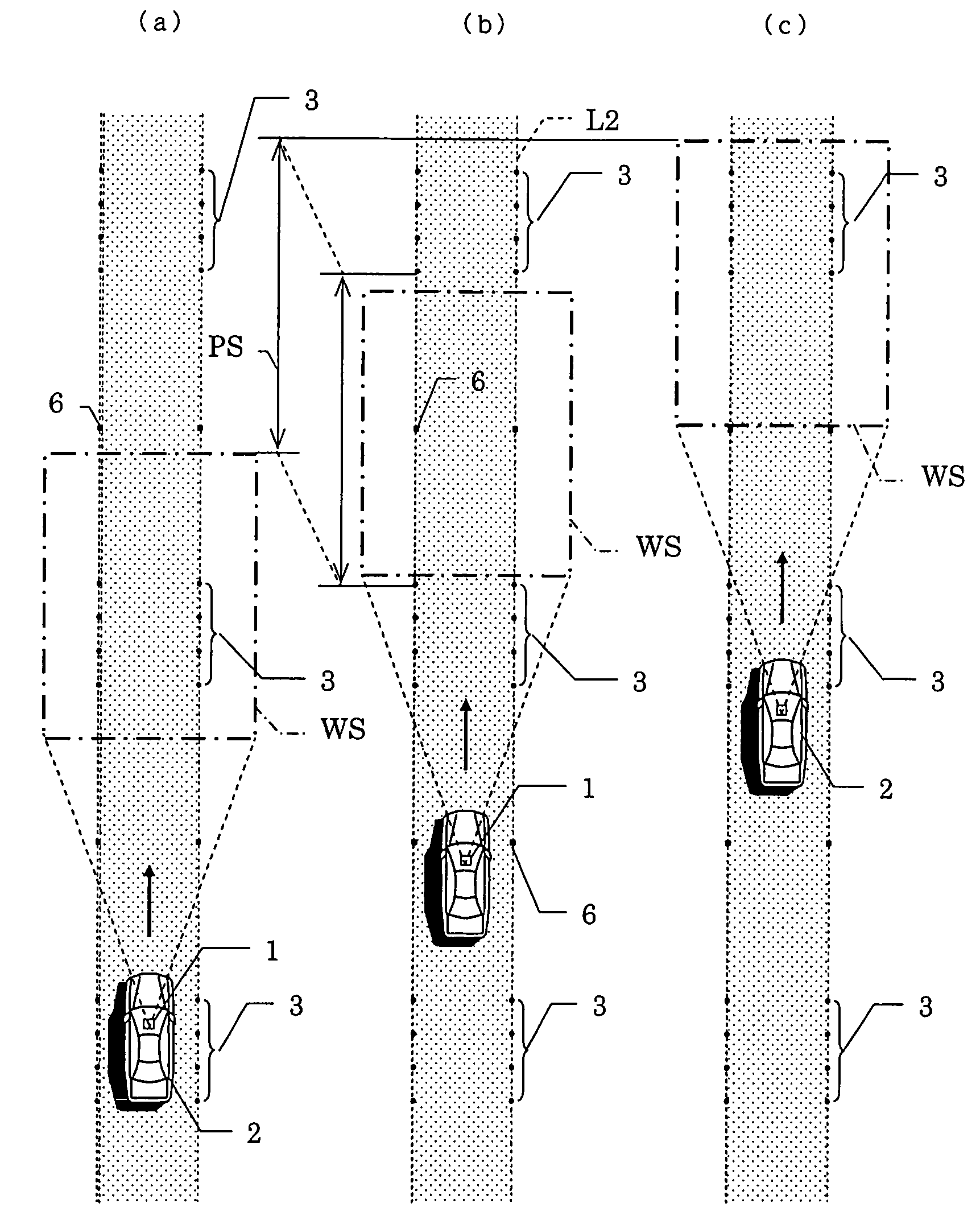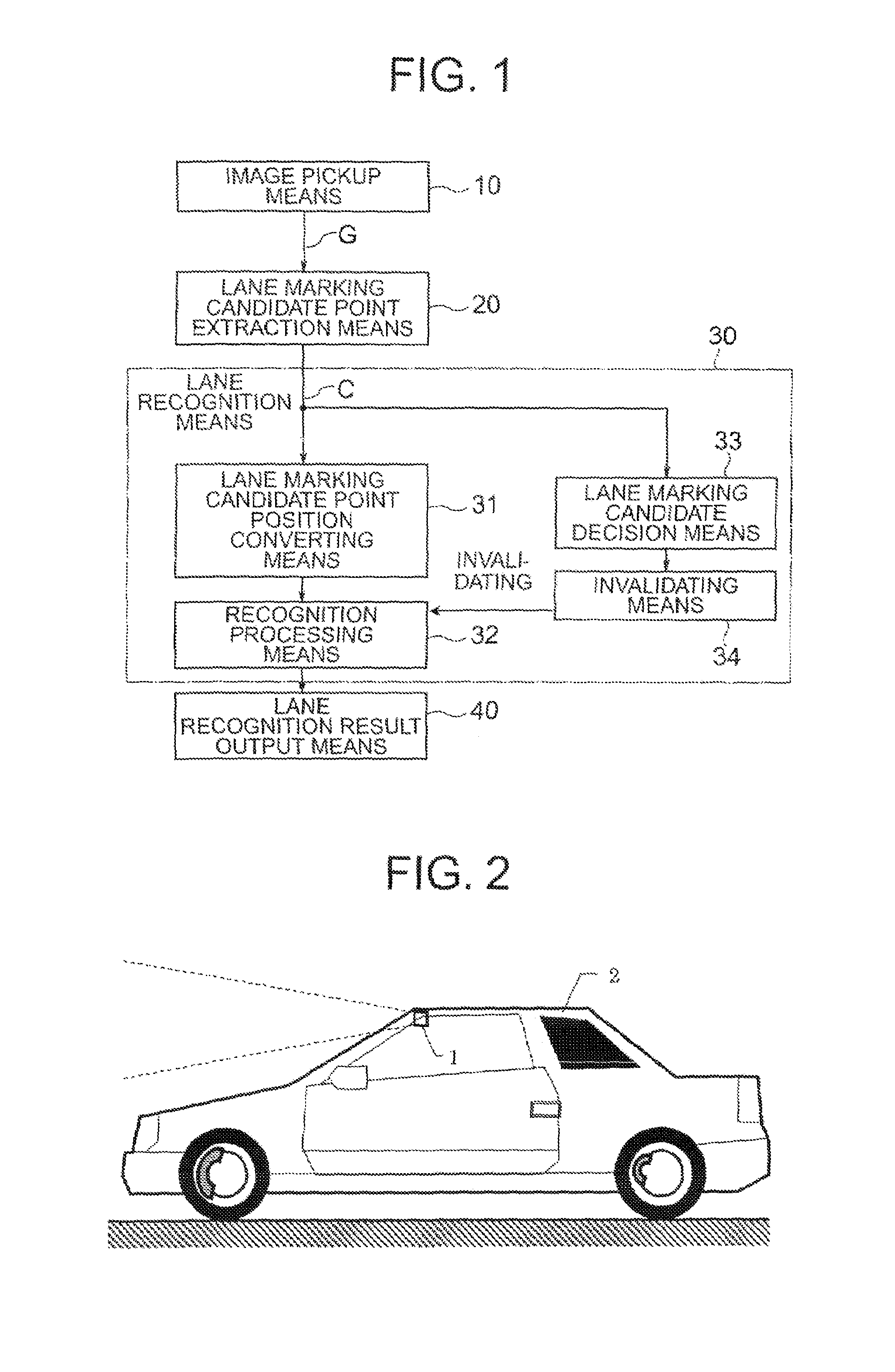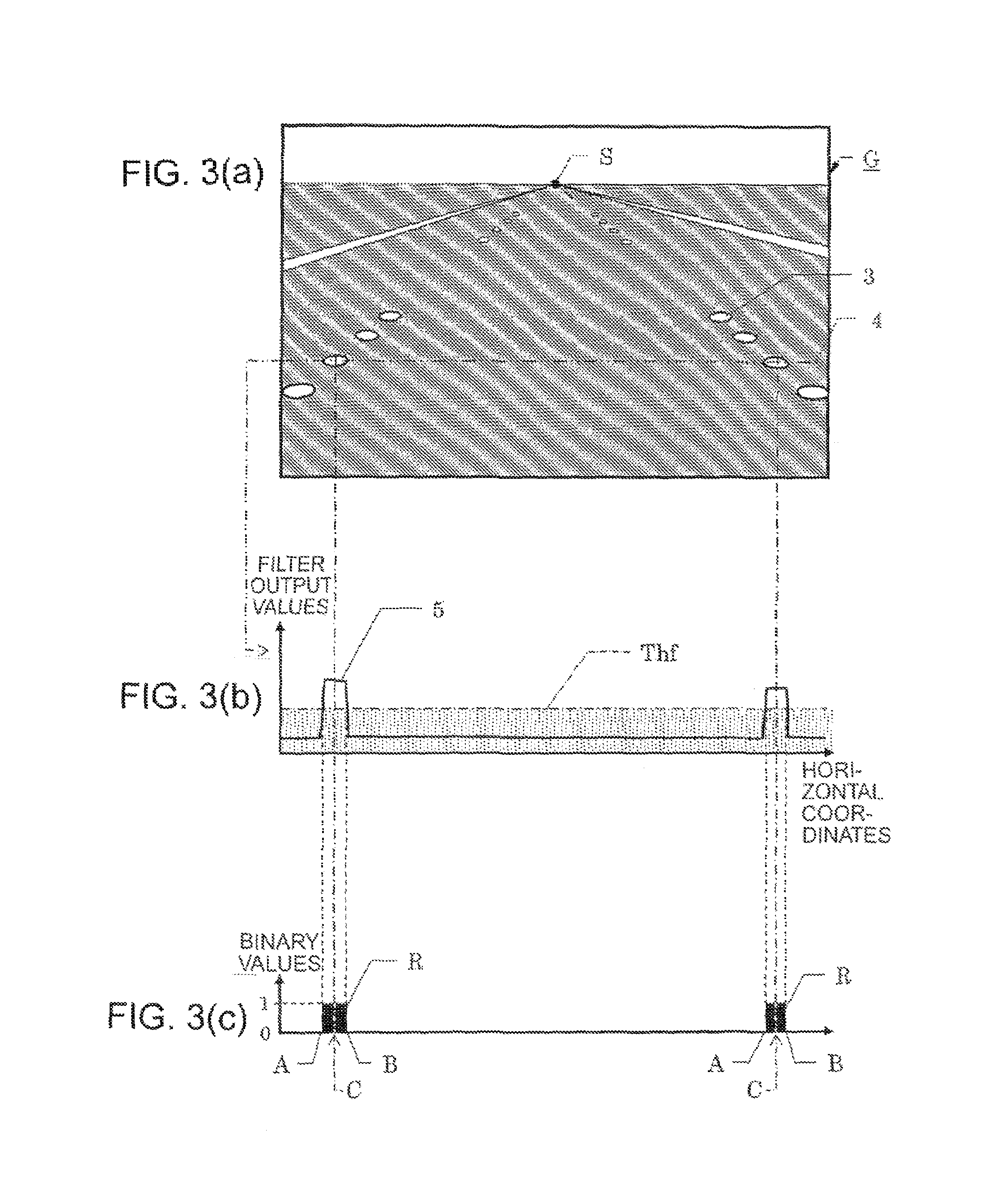Lane recognizing image processing system
a technology of image processing and lane recognition, which is applied in the direction of vehicular safety arrangements, pedestrian/occupant safety arrangements, instruments, etc., can solve the problems of difficult to realize lane recognition with reasonable accuracy, incur increasing load on hardware and software designed, and poor visibility of botts' dots lane markings, etc., to achieve enhanced reliability and mitigate load on hardware and software.
- Summary
- Abstract
- Description
- Claims
- Application Information
AI Technical Summary
Benefits of technology
Problems solved by technology
Method used
Image
Examples
embodiment 1
[0060]Now, the lane recognizing image processing system according to a first embodiment of the present invention will be described by reference to the drawings.
[0061]FIG. 1 is a block diagram showing a functional configuration of the lane recognizing image processing system according to the first embodiment of the invention, and FIG. 2 is a view showing an outer appearance of a motor vehicle which is equipped with the lane recognizing image processing system.
[0062]As can be seen in FIG. 2, a camera 1 constituting a major part of an image pickup means is mounted on a motor vehicle 2 at a front top portion thereof for taking pictures or images of scenes which appear in front of the traveling motor vehicle 2.
[0063]Referring to FIG. 1, the lane recognizing image processing system is comprised of an image pickup means 10 including the camera 1 mentioned above, a lane marking candidate point extraction means 20, a lane recognition means 30 and a lane recognition result output means 40.
[00...
embodiment 2
[0178]Next, description will be made of the lane recognizing image processing system according to a second exemplary embodiment of the present invention, which system differs from the first exemplary embodiment in the respect that the lane recognition means additionally includes a lane recognition result storing means for validating the precedingly stored information when the invalidation processing is executed.
[0179]Now referring to FIG. 12, description will be directed to the lane recognizing image processing system according to the second exemplary embodiment of the invention in which the lane recognition result storing means 36 is incorporated.
[0180]FIG. 12 is a functional block diagram showing a configuration of the lane recognizing image processing system according to the second embodiment of the invention. In FIG. 12, components or means same as or equivalent to those described hereinbefore by reference to FIG. 1 are denoted by like reference numerals affixed with or without ...
embodiment 3
[0197]In the case of the lane recognizing image processing system according to the second exemplary embodiment of the present invention described above, the result of the preceding lane recognition is delivered when the invalidation processing is executed. A third exemplary embodiment of the present invention concerns the lane recognizing image processing system which is arranged such that the lane recognizing means includes a time-based average processing means, wherein when only one given frame becomes invalid for the lane recognition in the course of the lane recognition processing, a result of time-based average processing for which adverse influence of the lane recognition invalidation is mitigated is delivered as the output of the time-based average processing means.
[0198]In the following, the lane recognizing image processing system according to the third embodiment of the invention which system incorporates the time-based average processing means 37 will be described by refe...
PUM
 Login to View More
Login to View More Abstract
Description
Claims
Application Information
 Login to View More
Login to View More - R&D
- Intellectual Property
- Life Sciences
- Materials
- Tech Scout
- Unparalleled Data Quality
- Higher Quality Content
- 60% Fewer Hallucinations
Browse by: Latest US Patents, China's latest patents, Technical Efficacy Thesaurus, Application Domain, Technology Topic, Popular Technical Reports.
© 2025 PatSnap. All rights reserved.Legal|Privacy policy|Modern Slavery Act Transparency Statement|Sitemap|About US| Contact US: help@patsnap.com



